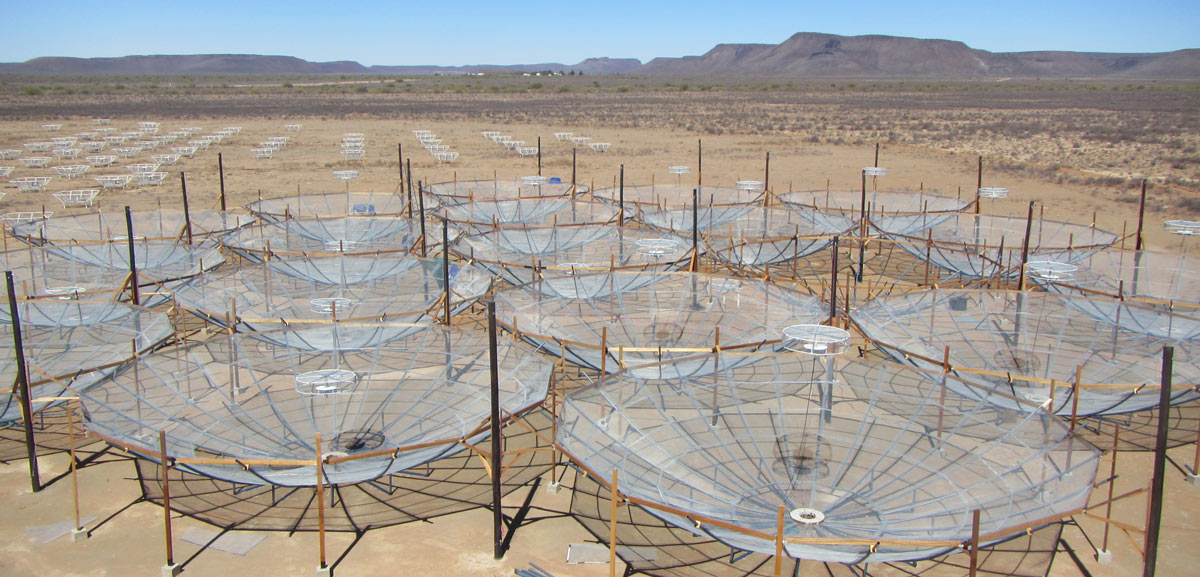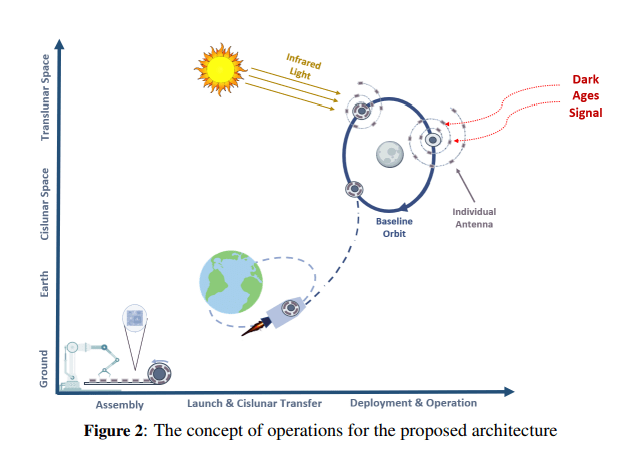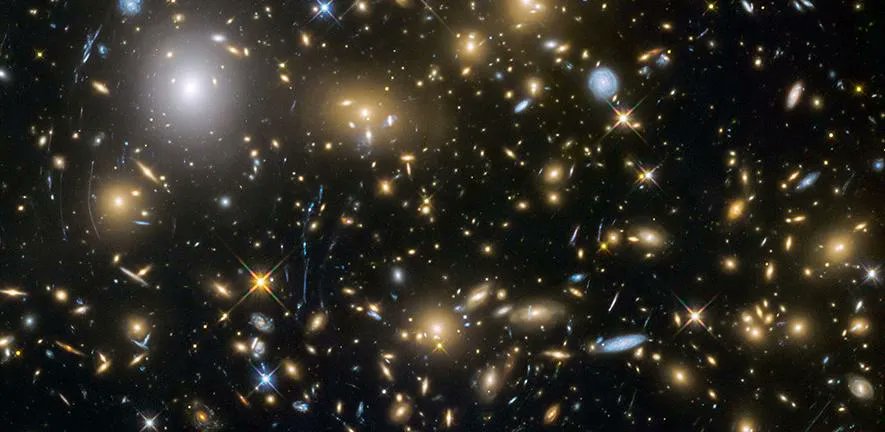One of the most significant constraints on the size of objects placed into orbit is the size of the fairing used to put them there. Large telescopes must be stuffed into a relatively small fairing housing and deployed to their full size, sometimes using complicated processes. But even with those processes, there is still an upper limit to how giant a telescope can be. That might be changing soon, with the advent of smart materials – particularly on a project funded by NASA’s Institute for Advanced Concepts (NIAC) that would allow for a kilometer-scale radio telescope in space.
Continue reading “Using Smart Materials To Deploy A Dark Age Explorer”A Radio Telescope on the Moon Could Help Us Understand the First 50 Million Years of the Universe
In the coming decade, multiple space agencies and commercial space providers are determined to return astronauts to the Moon and build the necessary infrastructure for long-duration stays there. This includes the Lunar Gateway and the Artemis Base Camp, a collaborative effort led by NASA with support from the ESA, CSA, and JAXA, and the Russo-Chinese International Lunar Research Station (ILRS). In addition, several agencies are exploring the possibility of building a radio observatory on the far side of the Moon, where it could operate entirely free of radio interference.
For years, researchers have advocated for such an observatory because of the research that such an observatory would enable. This includes the ability to study the Universe during the early “Cosmic Dark Ages,” even before the first stars and galaxies formed (about 50 million years after the Big Bang). While there have been many predictions about what kind of science a lunar-based radio observatory could perform, a new research study from Tel Aviv University has predicted (for the first time) what groundbreaking results this observatory could actually obtain.
Continue reading “A Radio Telescope on the Moon Could Help Us Understand the First 50 Million Years of the Universe”A New Telescope Could Detect Decaying Dark Matter in the Early Universe
Hydrogen is the most abundant element in the Universe. By far. More than 90% of the atoms in the Universe are hydrogen. Ten times the number of helium atoms, and a hundred times more than all other elements combined. It’s everywhere, from the water in our oceans to the earliest regions of the Cosmic Dawn. Fortunately for astronomers, all this neutral hydrogen can emit a faint emission line of radio light.
Continue reading “A New Telescope Could Detect Decaying Dark Matter in the Early Universe”Astronomers are Working on a 3D map of Cosmic Dawn

The frontiers of astronomy are being pushed regularly these days thanks to next-generation telescopes and scientific collaborations. Even so, astronomers are still waiting to peel back the veil of the cosmic “Dark Ages,” which lasted from roughly 370,000 to 1 billion years after the Big Bang, where the Universe was shrouded with light-obscuring neutral hydrogen. The first stars and galaxies formed during this same period (ca. 100 to 500 million years), slowly dispelling the “darkness.” This period is known as the Epoch of Reionization, or as many astronomers call it: Cosmic Dawn.
By probing this period with advanced radio telescopes, astronomers will gain valuable insights into how the first galaxies formed and evolved. This is the purpose of the Hydrogen Epoch of Reionization Array (HERA), a radio telescope dedicated to observing the large-scale structure of the cosmos during and before the Epoch of Reionization located in the Karoo desert in South Africa. In a recent paper, the HERA Collaboration reports how it doubled the array’s sensitivity and how their observations will lead to the first 3D map of Cosmic Dawn.
Continue reading “Astronomers are Working on a 3D map of Cosmic Dawn”Sometimes Astronomy isn’t About What you see, but What you don’t see
Constraints are critical in any scientific enterprise. If a hypothesis predicts that there should be an observable phenomenon, and there isn’t any trace of it, that’s a pretty clear indication that the hypothesis is wrong. And even false hypotheses still move science forward. So it is with astronomy and, in particular, explorations of the early universe. A paper authored by researchers at Cambridge and colleagues now puts a particularly useful constraint on the development of early galaxies, which has been a hot topic in astronomy as of late.
Continue reading “Sometimes Astronomy isn’t About What you see, but What you don’t see”Searching for the End of the Universe’s “Dark Age”

According to the most widely accepted cosmological theories, the first stars in the Universe formed a few hundred million years after the Big Bang. Unfortunately, astronomers have been unable to “see” them since their emergence coincided during the cosmological period known as the “Dark Ages.” During this period, which ended about 13 billion years ago, clouds of gas filled the Universe that obscured visible and infrared light.
However, astronomers have learned that light from this era can be detected as faint radio signals. It’s for this reason that radio telescopes like the Murchison Widefield Array (MWA) were built. Using data obtained by this array last year, an international team of researchers is scouring the most precise radio data to date from the early Universe in an attempt to see exactly when the cosmic “Dark Ages” ended.
Continue reading “Searching for the End of the Universe’s “Dark Age””



